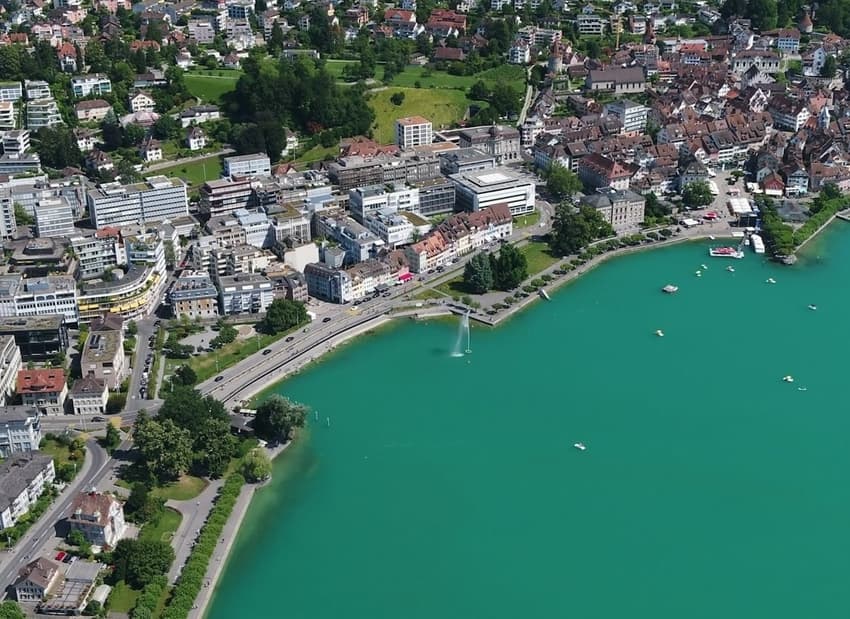UPDATE: Where in Switzerland does your money go further?

Depending on where in Switzerland you live, your money could far — or not far enough.
Even though Switzerland is a high-cost country, a new study shows that its residents’ purchasing power is greater than in neighbouring countries.
According to data released this week by the market research institute GfK, Switzerland has an average purchasing power per capita of almost 50,000 francs — 3.9 percent more than in 2023. In addition to income, GfK analysis also included capital income, unemployment benefits, family benefits, and pensions.
Converted into euros for comparison purposes, Switzerland has a per-capita purchasing power of 52,566 euros. Austria’s figure is 29,266 euros and Germany’s 27,848 euros.
The reason could be that salaries are lower in those countries, while the inflation rate has been higher than in Switzerland.
That's the general picture. But within the country itself people in some cantons are better off financially than in others.
Which cantons have the highest, and lowest purchasing power?
The survey found that residents of some cantons have more money to spend (or save) than their counterparts in others.
(As GfK indicated these figures in euros, these are conversions into francs).
In all, purchasing power in eight cantons exceeds the national average of nearly 50,000 francs.
In the first place is Zug, where each person has 82,084 francs a year at his or her disposal. Not coincidentally, Zug is also the canton with the lowest tax rate in Switzerland.
READ MORE: Why does the canton of Zug have Switzerland's lowest taxes?
Next are Schwyz (72,713 francs), Nidwald (63,065), Zurich (57,771), Obwalden (55,561), Appenzell Innerrhoden (53,406), Basel-Country (52,058), and Geneva (50,064).
What about the 'poorest' canton?
That is Jura, last in the ranking, where people have a per-capita purchasing power of 41,819 francs — which is still higher than Austria and Germany's average.
How does the situation look if districts and cities, rather than cantons, are compared?
As in previous years, the Schwyz district of Höfe, with the spending potential of 129,000 francs per capita is in the lead. Residents there have a purchasing power that is more than 150 percent higher than that of the average Swiss.
The city of Meilen in canton Zurich occupies the second place, with 85,270 francs.
At the other end of the ranking is the Bernina region in Graubünden: here, the inhabitants have a per capita purchasing power of 36,649 francs. The purchasing power per capita of the Höfe district is therefore almost 3.5 times higher than that of the Graubünden region.
Almost all municipalities in the top 10 are geographically close to Lake Zurich and located in the four cantons with the highest purchasing power.
The only exception: Lavaux-Oron in canton Vaud — 62,835 per capita.
Comments
See Also
Even though Switzerland is a high-cost country, a new study shows that its residents’ purchasing power is greater than in neighbouring countries.
According to data released this week by the market research institute GfK, Switzerland has an average purchasing power per capita of almost 50,000 francs — 3.9 percent more than in 2023. In addition to income, GfK analysis also included capital income, unemployment benefits, family benefits, and pensions.
Converted into euros for comparison purposes, Switzerland has a per-capita purchasing power of 52,566 euros. Austria’s figure is 29,266 euros and Germany’s 27,848 euros.
The reason could be that salaries are lower in those countries, while the inflation rate has been higher than in Switzerland.
That's the general picture. But within the country itself people in some cantons are better off financially than in others.
Which cantons have the highest, and lowest purchasing power?
The survey found that residents of some cantons have more money to spend (or save) than their counterparts in others.
(As GfK indicated these figures in euros, these are conversions into francs).
In all, purchasing power in eight cantons exceeds the national average of nearly 50,000 francs.
In the first place is Zug, where each person has 82,084 francs a year at his or her disposal. Not coincidentally, Zug is also the canton with the lowest tax rate in Switzerland.
READ MORE: Why does the canton of Zug have Switzerland's lowest taxes?
Next are Schwyz (72,713 francs), Nidwald (63,065), Zurich (57,771), Obwalden (55,561), Appenzell Innerrhoden (53,406), Basel-Country (52,058), and Geneva (50,064).
What about the 'poorest' canton?
That is Jura, last in the ranking, where people have a per-capita purchasing power of 41,819 francs — which is still higher than Austria and Germany's average.
How does the situation look if districts and cities, rather than cantons, are compared?
As in previous years, the Schwyz district of Höfe, with the spending potential of 129,000 francs per capita is in the lead. Residents there have a purchasing power that is more than 150 percent higher than that of the average Swiss.
The city of Meilen in canton Zurich occupies the second place, with 85,270 francs.
At the other end of the ranking is the Bernina region in Graubünden: here, the inhabitants have a per capita purchasing power of 36,649 francs. The purchasing power per capita of the Höfe district is therefore almost 3.5 times higher than that of the Graubünden region.
Almost all municipalities in the top 10 are geographically close to Lake Zurich and located in the four cantons with the highest purchasing power.
The only exception: Lavaux-Oron in canton Vaud — 62,835 per capita.
Join the conversation in our comments section below. Share your own views and experience and if you have a question or suggestion for our journalists then email us at [email protected].
Please keep comments civil, constructive and on topic – and make sure to read our terms of use before getting involved.
Please log in here to leave a comment.